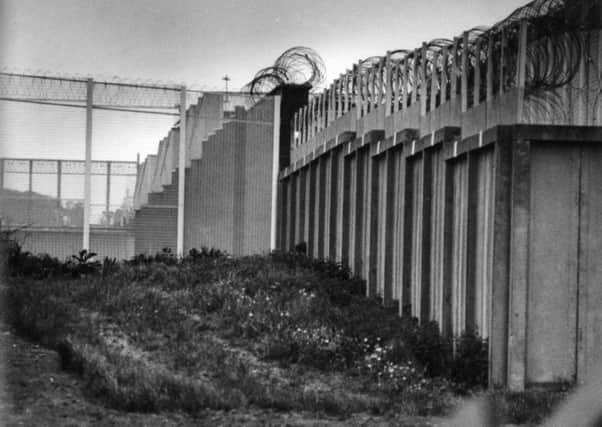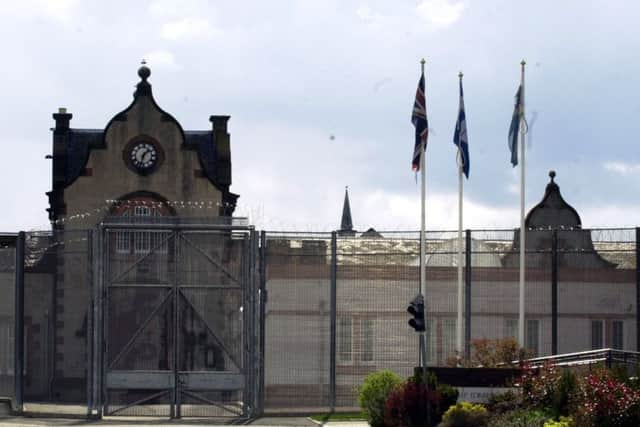George Robertson: The last man hanged in Edinburgh


IT CAN’T have been easy for Elizabeth McGarry.
It was 1954 and here she was, a Catholic single mother, two teenagers living under the same roof, no job and few prospects for happiness.
Her second marriage had collapsed after just a few months.


And now her first husband, violent, abusive and intensely jealous, was back on the scene.
Maybe she couldn’t face a life of loneliness.
Advertisement
Hide AdAdvertisement
Hide AdMaybe she believed that his violent streak – so cruel that he eventually admitted that the only way he could “make her see sense” was to bind, gag and threaten her with a hatchet – had finally changed.
Or perhaps she opened the door to her Tron Square home and let him back into her life 19 years after they first married, just because she was too plain scared not to.


Whatever the reasons, George Alexander Robertson had indeed returned to his family home.
And neither 39-year-old Elizabeth, nor the couple’s teenagers – George, 18 and about to start National Service, and Jean, a pretty 16-year-old with a job at a city paper mill – could have predicted the bloody nightmare that was about to unfold.
It was the last day of February, 1954.
Advertisement
Hide AdAdvertisement
Hide AdA few weeks earlier and Elizabeth had finally snapped – having welcomed her ex-husband back to the family, she quickly discovered his brutal side was far from healed, that vile, aggressive streak was as frightening as ever.
It must have taken all her courage to throw him out.
All too aware of his vicious side, from then on mother and children kept the doors to their home at 57 Tron Square bolted at all times, ensured a chair was wedged against the handle for extra protection, and a poker rested beside one of the windows.
Just in case . . . As it turned out, Elizabeth and her children had good reason to be scared.
Exactly what happened to make George Robertson commit a crime of such shocking brutality it would lead to him holding the dubious ‘honour’ of the last man to hang in Edinburgh, is anyone’s guess.
Advertisement
Hide AdAdvertisement
Hide AdBut the sheer horror of what happened on 28 February, 1954, still makes chilling reading 55 years on.
Elizabeth, hardworking George and Jean, a strikingly attractive teenager who had battled ill health to complete her schooling at St Thomas of Aquin’s in Lauriston, had just enjoyed a fun evening at home with neighbours, singing and laughing into the night.
It may be they were simply too exhausted or too relaxed to remember to wedge the chair into place, hard against the front door. Jean woke first.
The soft, urgent whisper of her father’s voice had drifted from the hall to her bedroom as he ordered his wife: “Get ben the kitchen.”
Advertisement
Hide AdAdvertisement
Hide AdJean later told the High Court: “I awoke my brother after my mother had gone to the kitchen. We went out into the lobby and I was just behind him.
“I saw him sticking a knife in George’s head.
“George fell and my father came round to me,” she said, her tears flowing as she gave her evidence to the hushed court.
“He pushed me on the bed, he had a knife in his hand. He started stabbing me. I was screaming.”
There was the sound of the front door opening – perhaps her mother’s desperate attempt to flee the scene – but it was enough to save Jean’s life. Her father dashed back downstairs leaving two bleeding, terrified teenagers in the upstairs hallway, George pleading with his sister to get a doctor.
Advertisement
Hide AdAdvertisement
Hide AdJean grabbed two bedspreads and tried to tie them together in order to hang them from the window so they could climb down to safety.
It nearly worked, but her arm was just too badly injured. Now her father was returning upstairs.
And along with his knife, he carried something even more horrific – the blood-drenched body of his ex-wife, a gaping hole in her stomach and a white handkerchief stuffed in her mouth, hands bound together.
George Robertson, a veteran of the Spanish Civil war, now jobless, homeless and rejected by his wife, threw her to the kitchen floor.
Advertisement
Hide AdAdvertisement
Hide AdNow for Jean. He was busy winding tape around her mouth and tying up her hands too, when young George, a coal porter while he awaited the results of his National Service medical, suddenly made a dramatic bolt for freedom.
He dashed along the balcony, down to the quadrangle outside and then threw himself through a neighbour’s kitchen window, where he begged for help.
Following him, just yards behind, enraged and still clutching his knife, came his father.
The Hay family, whose quiet home was now about to become a murder scene, cowered in terror as blow after blow rained down on the terrified teen as he screamed for help.
Advertisement
Hide AdAdvertisement
Hide AdDefenceless against his father’s brutality, young George finally slumped to the floor, dying.
Job done, his father threw his body over his shoulder and strolled home leaving a bloody trail across Tron Square.
Jean cowered as he propped George and Elizabeth up in the kitchen and then proceeded to stick his head in the gas oven. He was still there when police arrived, still alive and Jean desperately ill from her injuries.
They found Elizabeth, dressed in just her bra and with a brown coat draped over her body, was dead, riddled with 15 separate stab wounds.
Advertisement
Hide AdAdvertisement
Hide AdTeenager George, blood-soaked and lifeless, had been stabbed 14 times.
It was an emotionless George, his dark wavy hair slightly dishevelled, wearing a light brown suit, who next day was marched into the dock at Edinburgh Sheriff Court to appear for just a minute before being remanded in custody.
Four months later he would appear at the High Court in Edinburgh, his guilty pleas of murder and attempted murder rejected despite his protests.
Instead a harrowing two-day trial would hear the disturbing account of his brutality in all its bloody detail.
Advertisement
Hide AdAdvertisement
Hide AdIt took the jury an hour to find him guilty of killing his wife and his son and of trying to murder Jean.
They had heard he suffered a “brainstorm”, a mad turn. But why? The court had heard hints of sexual impropriety involving his daughter.
He denied them, but his wife’s rejection for a second time would not have helped.
Doctors suggested he may have convinced himself that the girl was somehow trying to shatter his attempts to rebuild life with Elizabeth – enough to tip him over the edge.
Advertisement
Hide AdAdvertisement
Hide AdMeanwhile, Elizabeth’s sister, Jean Gormley told the High Court George had a history of abusing his wife yet was “passionately fond” of her.
And intensely jealous.
He did not appeal against his death sentence and three weeks later, on 23 June, 1954, he took the short walk from a cell in A block at Saughton Prison to where a set of wooden gallows awaited.
Those gallows had already brought the full weight of justice down upon brutal men who chose to take another’s life.
Three had already been executed since they were installed there when the prison was built in 1920.
Advertisement
Hide AdAdvertisement
Hide AdTalk in some circles had already started over whether hanging was an appropriate punishment in a modern society.
But the movement to end capital punishment had not progressed quite far enough to save George Alexander Robertson.
He was hanged at 8:02am. George Alexander Robertson, driven by jealously, enraged by his wife’s rejection, perhaps infuriated by claims made by his daughter, was now dead too.
And the Edinburgh gallows had done their job for the last time...